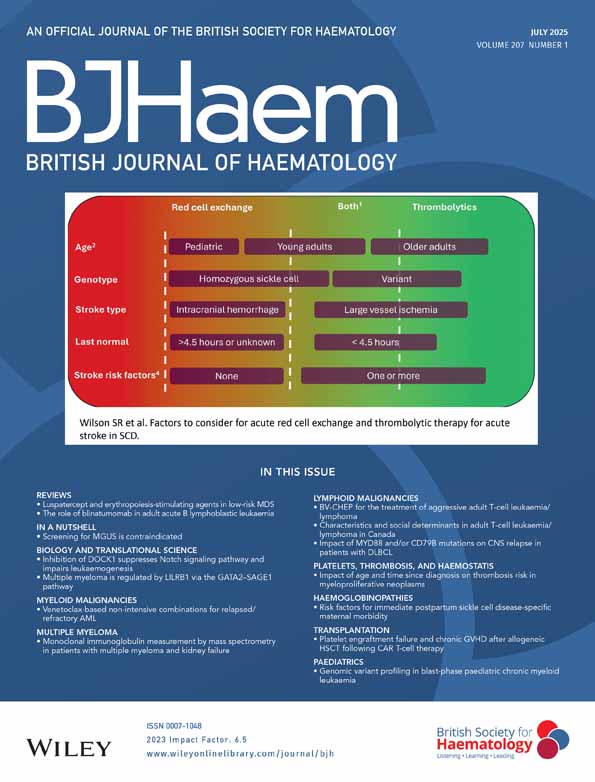High-dose factor VIIa increases initial thrombin generation and mediates faster platelet activation in thrombocytopenia-like conditions in a cell-based model system
Abstract
Clinical experience has shown that high doses of recombinant factor VIIa (rFVIIa) may ensure haemostasis in thrombocytopenic patients. We have used a cell-based model system to mimic thrombocytopenia and analyse the effect of rFVIIa. Lowering the platelet density from 200 × 109/l (reflecting normal conditions) to 100, 50, 20 and 10 × 109/l revealed a platelet density-dependent decrease in the maximal rate of thrombin generation, a prolongation in the time to maximal thrombin activity and a lower maximal level of thrombin formed. The platelet activation, measured as the time to half-maximal P-selectin (CD62) exposure, was not significantly dependent on the platelet density in the range of 200 × 109/l to 10 × 109/l, although there was a tendency for slower platelet activation at 20 × 109 and 10 × 109 platelets/l than at the higher platelet densities. Addition of 50–500 nmol/l rFVIIa to samples with 20 × 109 or 10 × 109 platelets/l shortened the lag phase of thrombin generation as well as the time to half-maximal platelet activation. Our data indicate that high doses of rFVIIa may help to provide haemostasis in thrombocytopenic patients by increasing the initial thrombin generation, resulting in faster platelet activation and thereby compensating for the lower number of platelets present.




